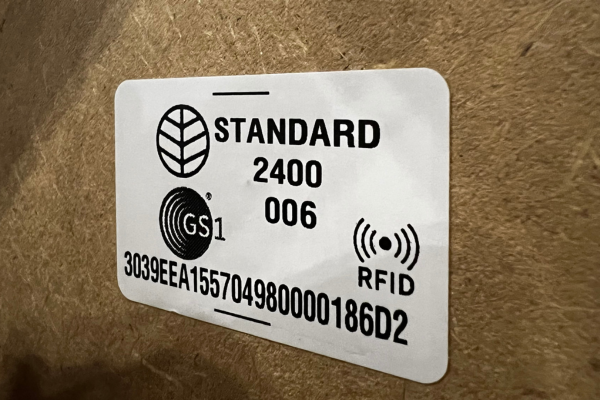August 23, 2023 Industry news
The DLUHC announced its decision on 18 August following a consultation on proposed changes to building regulations under part three of the Building Safety Act 2022.
It said: "Upon further consideration the government has decided that to deliver a single source of truth it is not necessary for all the golden thread information to be stored in a single system. The government has noted feedback from stakeholders about their use of multiple systems and how this can deliver effective outcomes. The government is committed to ensuring the golden thread of information is kept up to date, can be effectively used to deliver safe outcomes and can be transferred.”
Many within the construction industry had previously assumed that this “single source of truth” would equate to all building safety information being held on a single, mandatory system that all parties would be required to use by law. The government's response however confirms that this will not be the case, with the DLUHC adding that it will but up to the industry to determine the best approaches for delivering this.
While this approach is yet to be determined, one thing is for certain; interoperable data will be essential.
What is the golden thread?
In the context of building safety, the "golden thread" refers to a comprehensive and structured approach to managing building information and data throughout the entire lifecycle of a building, from design and construction through to occupancy and maintenance.
This concept has gained prominence since the introduction of the Building Safety Act 2022 which, along with a range of other sweeping reforms that will change the way buildings are designed, constructed and managed, has committed to implementing the golden thread in the construction industry.

The golden thread emphasises transparency, accountability, and the need for effective communication among all parties involved in a building's lifecycle, including architects, builders, regulators, owners, and occupiers.
It's intended to prevent information gaps and ensure that essential safety information is available throughout the building's existence, ultimately enhancing overall safety and reducing the risks associated with building failures or emergencies.
Key elements include:
- Design and construction information: detailed information about the building's design, materials, components, and systems must be documented and maintained throughout the construction process. This includes architectural drawings, structural plans, fire safety designs, and any changes that occur during construction.
- Product information: information about the materials and products used in construction, including fire performance ratings and test certificates, should be recorded. This helps ensure that only approved and safe materials are used in the building's construction.
- As-built information: once the building is completed, accurate as-built documentation should be created, detailing any deviations from the original design and capturing the actual condition of the building.
- Fire safety information: fire safety strategies, evacuation plans, and other fire-related information must be documented and shared with relevant parties, including building occupants and first responders.
- Maintenance and inspection records: records of regular maintenance, inspections, and safety checks should be maintained to ensure that the building's systems and safety features are properly maintained over time.
- Ownership transition: when ownership of a building changes, the golden thread information should be transferred to the new owner or manager to ensure continuity of safety management.
- Digital technologies: Technology, such as Building Information Modeling (BIM), can play a crucial role in maintaining the golden thread by providing a digital repository of information that can be easily updated and accessed by various stakeholders.
Why interoperability is key
The government’s announcement that a variety of different systems can be used to capture and share building safety information confirms that interoperability will be critical to ensuring the Building Safety Act delivers on its aims.
It is essential that any data related to a building's design, construction, and ongoing management can be seamlessly shared, accessed, and utilised by different stakeholders, systems and registries throughout its lifecycle. Without a common, universal data language that works for all, the effectiveness of the golden thread concept could be significantly compromised.
The different stages of a building’s lifecycle involve a wide range of stakeholders including architects, engineers, contractors, facility managers and even emergency responders. As acknowledged by the government’s response, these stakeholders use different software, tools and systems to manage and access information.
Without interoperability, it will be difficult to ensure that data can be shared and exchanged seamlessly between these disparate systems. This means there is a risk that data could be held in silos, making it difficult to access leading to gaps in oversight and inefficiencies.
In fact, interoperability offers wide range of building safety benefits alongside seamless sharing. These benefits include:
Accurate updates
All buildings undergo modifications, renovations, and updates at various stages of their lifecycle. Interoperability ensures that everyone has access to the latest information about design, materials, safety features, and maintenance requirements.
Efficient management
To ensure a building remains safe, owners and facility managers need to keep track of maintenance schedules, inspections, and equipment records. Interoperability allows for the integration of maintenance information with other building data, streamlining management processes and reducing the risk of oversight.
Future proofing and regulatory compliance
Buildings have long lifecycles but materials and technology will change over time. Interoperability ensures that as technology evolves, data can still be accessed and used, preventing obsolescence. Just as technology evolves, so too do regulatory requirements.
In fact, much of the Building Safety Act’s secondary legislation is yet to be confirmed. Interoperable data can ensure that regulatory changes can be integrated into building information systems, helping stakeholders maintain compliance in line with the latest safety standards.
Transparency, accountability and improved decision making
Interoperability enhances transparency in sharing information, promoting accountability among stakeholders for maintaining accurate and up-to-date building information. It also enables them to make informed decisions based on a comprehensive view of the building's information.
For example, facility managers can make maintenance decisions considering the building's fire safety features and other critical systems.
In the event of emergencies, such as fires or natural disasters, quick and accurate access to building information can also be crucial for first responders. Interoperability could enable emergency services to retrieve critical information about the building's layout, fire safety features, evacuation plans, and more, enabling them to respond with greater speed and efficiency.
The role of GS1 standards
In summary, interoperability is critical for facilitating effective communication, collaboration, and data exchange among the diverse parties involved in a building's lifecycle. It ensures that the information is available when needed, leading to better outcomes in terms of safety, efficiency, and overall building management.

The golden thread of data starts with the ability for everyone, at any stage in the manufacture or usage of construction materials, to easily identify a product using a ‘common product language’.
GS1 standards are both system and device agnostic, allowing vital data to be shared between systems and organisations to facilitate system-wide interoperability.
Using GS1 standards and the Global Trade Item Number (GTIN) as the construction industry’s unique product identifier can provide the first critical piece of the golden thread.
This product data could then be used to build any number of easily shareable data sets that will enable stakeholders to make more informed decisions and meet new regulatory requirements for traceability, interoperability and accessibility with verifiable and secure data.



